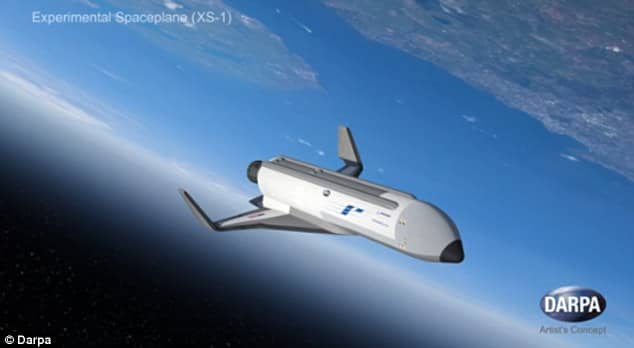The ever so surreptitious X-37b spaceplane has never failed to catch the attention of the media, with speculations ranging from terming it a spy plane to a space bomber. Whatever it might be, the project XS-1 is one step closer to completion and is expected to debut in 2020, with the US military claiming that the project will
‘bolster national security by providing short-notice, low-cost access to space.’
The vehicle is called Phantom Express and is a collaboration of Boeing and DARPA, a U.S. Department of Defense agency. Phantom Express has the size of a business jet and is designed to blast off like a rocket beyond the atmosphere. It will then leave the second-stage rocket and satellite in the orbit and turn around to land like an airplane on a runway.
After Elon Musk’s SpaceX, this DARPA-Boeing venture is the second attempt to great reusable launch vehicles that will considerably cut down the cost of sending payloads into space.
‘The reusable first stage … would be prepared for the next flight, potentially within hours,’ DARPA spokesman Jared Adams wrote in an email.
The XS-1 program is scheduled to fly ten flights within ten days and is planned to fly from Cape Canaveral, where other Boeing space programs are also based.
Phantom Express will have the capacity to launch itself into space and will be powered by a liquid-fueled Aerojet Rocketdyne AR-22 engine, and the entire space-plane weighs up to 3,000 pounds (1,361 kg).
‘The program aims to achieve a capability well out of reach today—launches to low Earth orbit in days, as compared to the months or years of preparation currently needed to get a single satellite on orbit,’ DARPA says.
It claims the plane would ‘revolutionize the Nation’s ability to recover from a catastrophic loss of military or commercial satellites, upon which the Nation today is critically dependent.’
‘The XS-1 would be neither a traditional airplane nor a conventional launch vehicle but rather a combination of the two, with the goal of lowering launch costs by a factor of ten and replacing today’s frustratingly long wait time with launch on demand,’ said Jess Sponable, DARPA program manager.
‘We’re very pleased with Boeing’s progress on the XS-1 through Phase 1 of the program and look forward to continuing our close collaboration in this newly funded progression to Phases 2 and 3—fabrication and flight.’
The project is aimed to help a commercial space deployment service in the future that would operate on minimal costs as little as $5 million or less. This would include the cost of an expendable upper stage and a recurring flight rate of at least ten flights per year, and would be a huge improvement on the current cost and flight frequency.

